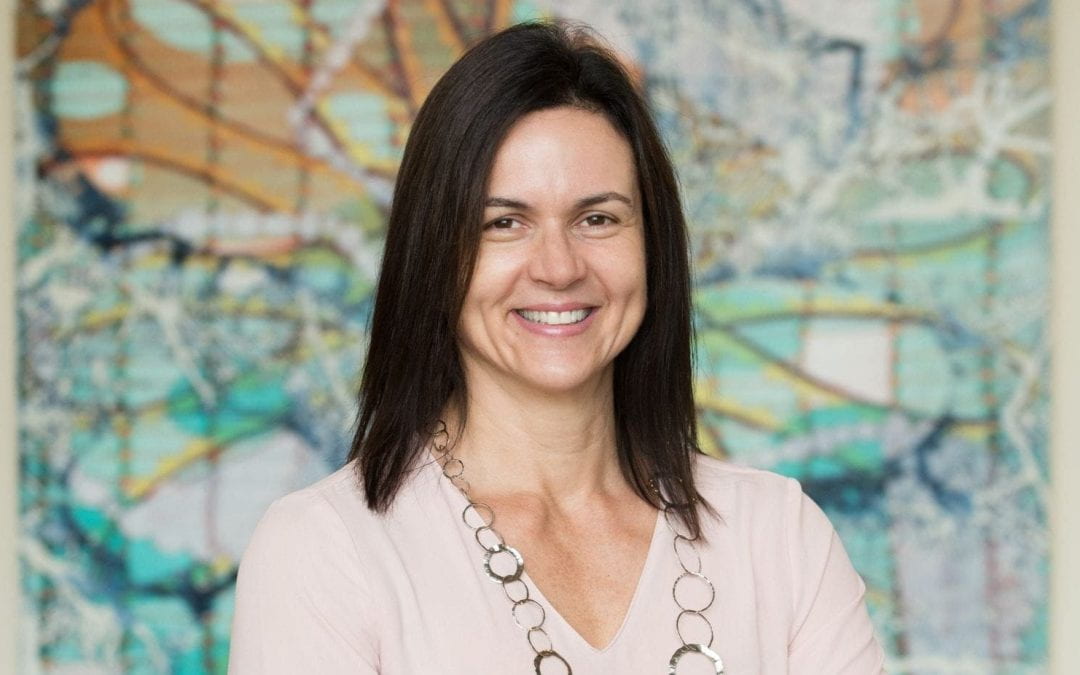Cristina Archer Appointed Director of UD’s Center for Research in Wind (CReW)
Article by Kelly Walker
20 years ago, Cristina Archer was approached by a professor with a relatively simple, but powerful question. How much wind is there in the United States?
Archer jumped at the interesting respite from the complex and, at times, stressful experience of her graduate studies to explore the question. Over the next year, she collected observations and conducted data analyses on wind potential in the United States. What began as a needed distraction became not only an additional topic of her dissertation, but also the focus of her post-doctoral studies, and ultimately her area of professional expertise – the transition to widespread, carbon-free power by harnessing wind energy as an environmentally and economically advantageous alternative to coal-powered electricity.
Archer eventually brought her skills, curiosity, and enthusiasm to the University of Delaware and UD’s Center for Research in Wind (CReW). After serving five years as Associate Director, Archer has a new role at CReW as the center’s director.
There’s no denying the inspiration in Archer’s voice as she describes her connection to CReW. “This group of faculty is my favorite group of people. These people, this mission – offshore wind, vehicle-to-grid – it’s where I belong. It’s really what defines me, my research, and my passion. This is where I want to be. Being part of CReW is my pleasure and my honor.”
Archer’s dedication and enthusiasm will serve her well as she follows the impressive tenures of her predecessors, Jeremy Firestone and Willett Kempton. Founded in 2008, under the leadership of Kempton and then Firestone, CReW has played an integral role in elevating the University of Delaware as the leading teaching and research institution on offshore wind power and vehicle-to-grid (V2G) electric storage.
The University of Delaware, through a joint venture with Siemens Gamesa, installed a 2-megawatt wind turbine at UD’s Hugh R. Sharp Campus in Lewes. The turbine creates enough energy to power UD’s Lewes Campus and provides surplus energy options to the Lewes community. It also allows students and researchers to investigate impacts and policy issues related to the renewable energy.
CReW’s demonstrated commitment to the education of tomorrow’s professional, policy, and scientific experts in wind power has also been significant. CReW offers a graduate certificate program in wind power science, engineering, and policy and recently introduced the Offshore Wind Skills Academy, the first of its kind in the United States, focused solely on advancing the skills and knowledge of professionals entering the wind industry.
Archer’s plans for CReW are just as ambitious as those who came before her. She has identified three long-term goals for strategic planning. The first, enhancing and elevating the visibility of the center, will demand concentrated effort. As common as the association between say, peanut butter and jelly, Archer would like the University of Delaware and CReW to become the recognizable, synonymous, and authoritative name in the field of wind power research, education, and training.
Consistent with that effort, Archer aims to see through a third branch of CReW with the establishment of a safety training center in Lewes for the offshore wind industry. Archer describes this endeavor as a “hugely ambitious goal” but one that would complete the story of CReW by enveloping the full spectrum of jobs in wind energy – research, education, and practical training.
Finally, as wind power becomes more integral to our daily lives, Archer recognizes the importance of increased community engagement and outreach aimed at fair decision making and acceptance of wind energy systems. Indeed, as the United States looks to move from the current 30 megawatts of offshore wind (five turbines operating at 6 megawatts each) to 30,000 megawatts by 2030, reframing public perceptions and understanding of wind turbines will be a critical piece in facilitating large-scale use of carbon-free power systems.
Before diving into strategic planning for these and other long-term goals, however, Archer has a more immediate endeavor to address – the 2022 NAWEA/WindTech Conference. The event, which will be hosted at the University of Delaware in September, will mark the first in-person conference for the North American Wind Energy Academy (NAWEA) Symposium and the International Conference on Future Technologies in Wind Energy (WindTech) since the COVID-19 shutdowns.
This major event will bring together stakeholders in the wind energy and grid integration fields from around the world to synthesize varying perspectives on meeting the challenge of transitioning our energy system to renewable energy.
Archer views the delivery of a successful, professionally attractive conference as her paramount initial responsibility as the new director of CReW. She knows it will require tremendous effort to meet the expectations and excitement for the Covid-postponed conference, but she is confident in the support of her colleagues, including previous directors Firestone and Kempton.
“I am taking on this role very humbly,” she stated. “I’m excited because I want CReW to continue. I believe in it. These are my people, if you will, and I really don’t want to disappoint them. I know they are supportive, and I can count on them. It’s rare.”
Cristina Archer is a professor in the Department of Geography and Spatial Sciences in UD’s College of Earth, Ocean and Environment, with a joint appointment in the Physical Ocean Science and Engineering (POSE) program of the School of Marine Science and Policy.
The Center for Research in Wind (CReW) at the University of Delaware fosters interdisciplinary and collaborative scientific research with the goal of facilitating the transition to power generation using carbon-free geophysical flows, particularly wind power. Learn more at: https://crew.udel.edu/

